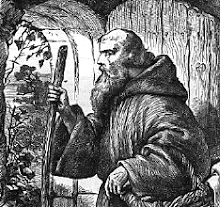In the back of the DMG of AD &D 1st edition there is a often overlooked section titled "Appendix P: Creating a party on the spur of the moment." This section provides a base to build a party from. A little dry at first glance but when studied a greater meaning comes to light.
The first paragraph focus on creating a party in a short period of time thereby focusing on valuable game time. The game time is actively playing not just spending time creating a character which in latter editions take eons. Less about number-stacking a character and more about play. After all that is the reason the players and DM are there for.
It mentions scenarios and levels and crafting a character appropriate for them. There are apparently three groups of levels of scenarios Low, Medium, and High. This parsing indicates that players may be of any level as long as all of them are with in a level range. For instance a party of Low level players may be a two 1st level, one 2nd level, and one 3rd level. It suggest inequality or just varying skill level. Equality should be striven for but if a characters stats are very high then putting them at a lower level would be that unfair to make them equal to a less advantaged character.
Also it mentions that players may not have suitable characters to adventure in the DM's campaign . What this speaks of is creating characters specifically for the campaign and doing so together. Crafting characters quickly but with a idea of how they fit in the world and possible ways the characters may be intertwined. It has a side effect of already laying the ground work for teamwork which is a vital part of any campaign.
Replacement heroes are discussed as well and how it is import to create them for the campaign as well. The implication is that the same above process be followed. The new character needs to fit into the empty space the dead or missing character left and not necessarily their shoes.
The appendix also discuses in brief the basic building blocks of a character: Abilities, Race &Class, Alignment, Level, Standard Equipment, Magic Items .This descriptions are pretty basic but there are a few treasures to be gleaned from them.
Cautiously choose alignment allowable to the characters so that it is not so diverse that the game breaks down in creature quarrels. It then breaks them down once again to groups: Neutral, Neutral Good, Lawful Neutral, and Chaotic Neutral. This of course can be done for other alignments as well such as: Lawful Evil, Lawful Good, Lawful Neutral. Alignment as a tool for party cohesion.
Finally it provides a few tables for Armor, Scrolls, Weapons, Miscellaneous Items. The final tools for adventurers to become successful. Nothing to incredible until we get to Miscellaneous Items a.k.a. Magic Items. These are reserved for parties of 5th level or high who travel into more dangerous areas. All are useful adventuring magic items and some even have the potential to randomly disrupt the game. But a good DM should always reward a character with clever use of a magic item. At last a parting word of wisdom that if the above guidelines are followed the DM is assured that the characters will be right for the campaign they adventure in. Relatively anyway.
All in all it teaches DMs and Players good lesson and simplifies the process of crafting a campaign specific party of characters.







